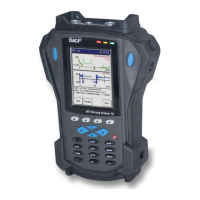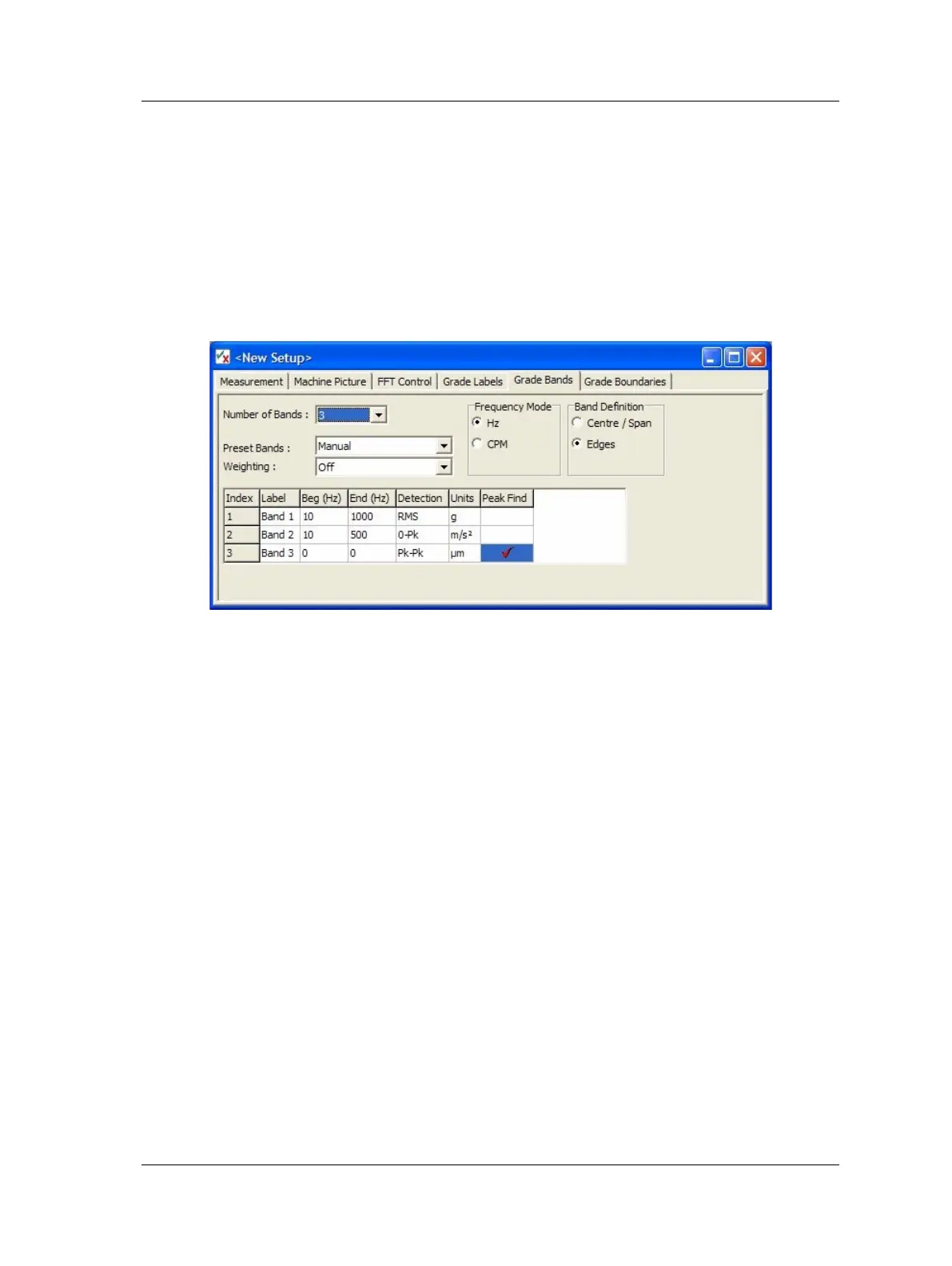Conformance Check Module
How to Set Up or Customize Conformance Test Templates
“Grade Bands” Tab
Grade Bands settings determine the number and setup of the overall vibration
measurements.
For example, an acceleration spectrum is collected when using an accelerometer
sensor. Grade Bands settings specify how the acceleration spectrum is measured to
provide an overall vibration reading(s) that is compared to grade levels on the GX (i.e.,
what frequency range is measured, what detection type is used, is the spectrum
integrated into other vibration spectra, and if so, what are their overall vibration
measurement settings).
Figure 9 - 15.
Example Grade Label Settings.
Setup fields include:
Number of Bands – Specify up to 64 overall vibration measurements (bands) to be
measured from the captured spectrum (typically only one or two for most conformance
tests). A table below this field automatically displays a setup row for each band.
On the GX, all measurements (bands) are simultaneously
calculated and compared to test grade levels at each sensor
location / orientation.
Preset Bands – This drop-down list allows preset octave bands to be set up
automatically.
Manual: Band frequency extent to be entered by hand.
1/1 Octave: Automatically sets up 11 bands between 16 Hz and 16 kHz using
octave spacing.
1/3 Octave – High: Automatically sets up 31 bands between 20 Hz and 20
kHz using 1/3 octave spacing.
1/3 Octave – Mid: Automatically sets up 31 bands between 10 Hz and 10 kHz
using 1/3 octave spacing.
1/3 Octave – Low: Automatically sets up 31 bands between 5 Hz and 5 kHz
using 1/3 octave spacing.
If this entry is set to non-manual, band extents cannot be edited.
SKF Microlog - GX Series 9 - 13
User Manual

